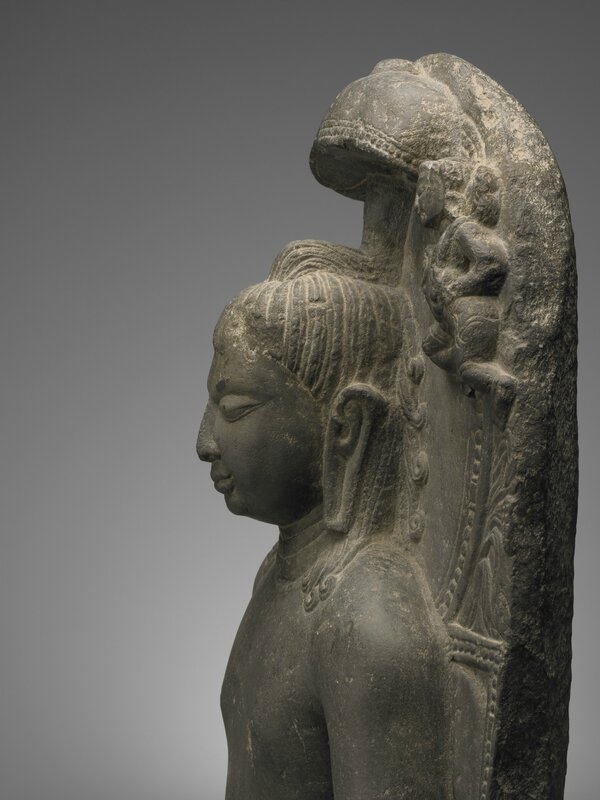15 janvier 2017
Jina Rishabhanatha, 6th–7th century C.E., Gupta (ca. 320–600 C.E.) to Pala period (ca. 750–1100)
Jina Rishabhanatha, 6th–7th century C.E., Gupta (ca. 320–600 C.E.) to Pala period (ca. 750–1100). Black chlorite stone, 66 x 40.6 x 12.7 cm (26 x 16 x 5 in.). Purchased with a gift from Steven M. Kossak, B.A. 1972, 2000.36.1. Photo credit: Yale University Art Gallery
Jina Rishabhanatha is the first of twenty-three Jina, “Victors” or “Conquerors” who had crossed through the “torrent of rebirth” before Mahavira (ca. 599–527 B.C.E.), the founder of Jainism. Like Buddha in many images, Rishabhanatha is shown framed by a halo and seated in a yogic posture of meditation, with hands resting on his feet and palms turned upward. Unlike the Buddha, however, he is shown nude (“sky-clad”), representing a condition of absolute detachment from the entanglements of the world. His name literally means “Lord Bull,” and he is identified by the image on his throne of two bulls flanking a wheel. As in Buddhism, in Jainism the wheel symbolizes the teachings of the religion. In its balance and profound serenity, this sculpture exemplifies the achievement of Gupta-period sculptors.
Publicité
Publicité
Commentaires

/https%3A%2F%2Fprofilepics.canalblog.com%2Fprofilepics%2F1%2F0%2F100183.jpg)
/https%3A%2F%2Fstorage.canalblog.com%2F03%2F02%2F119589%2F96711876_o.jpg)
/https%3A%2F%2Fstorage.canalblog.com%2F11%2F31%2F119589%2F94773502_o.jpg)
/https%3A%2F%2Fstorage.canalblog.com%2F20%2F83%2F119589%2F94772815_o.jpg)
/https%3A%2F%2Fstorage.canalblog.com%2F26%2F72%2F119589%2F75604929_o.jpg)
/https%3A%2F%2Fstorage.canalblog.com%2F59%2F60%2F119589%2F26458628_o.jpg)





/image%2F1371349%2F20240426%2Fob_fa9acd_telechargement-23.jpg)
/image%2F1371349%2F20240426%2Fob_9bd94f_440340918-1658263111610368-58180761217.jpg)
/image%2F1371349%2F20240426%2Fob_cfa6e3_440317478-1658265314943481-25907527200.jpg)
/image%2F1371349%2F20240426%2Fob_844371_440162278-1658267648276581-39734064969.jpg)